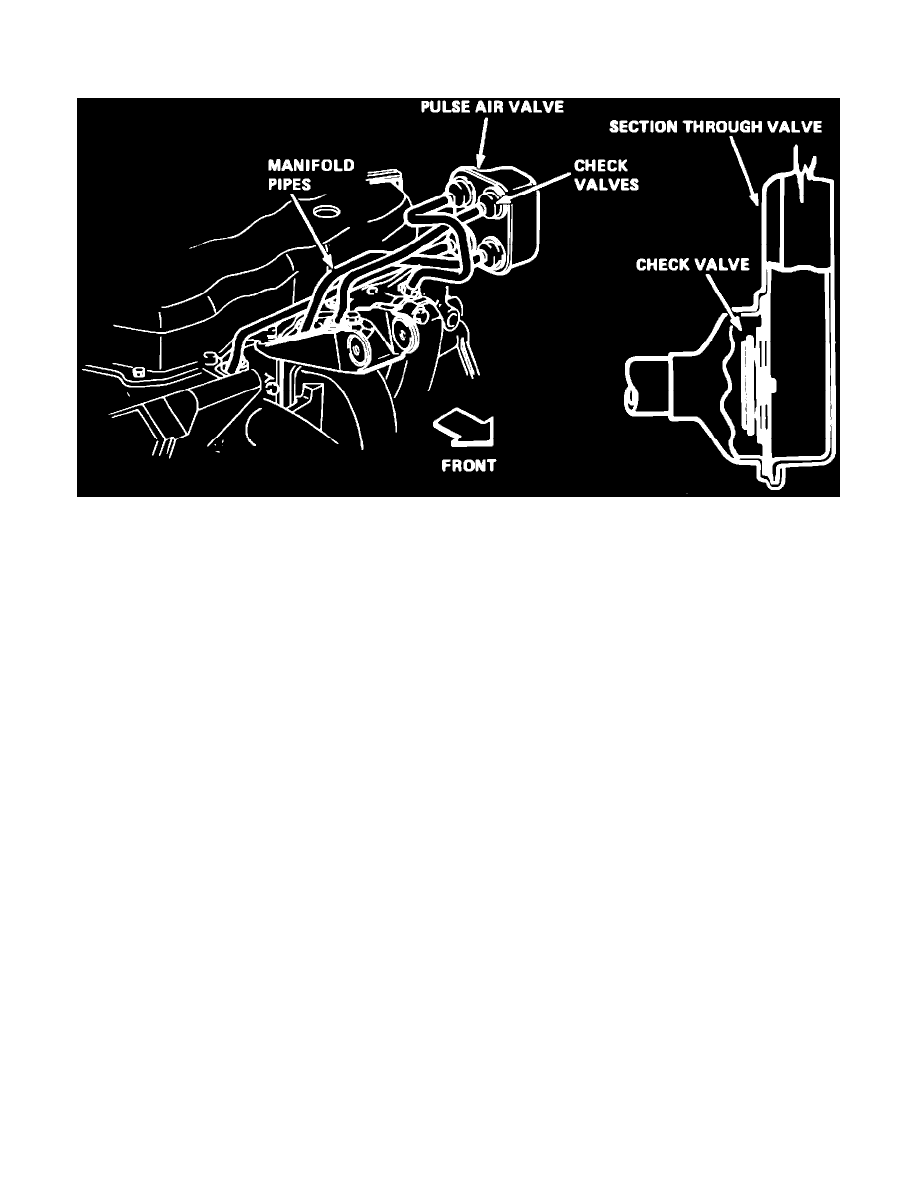Skylark V6-173 2.8L VIN X 2-bbl (1984)

Pulsair Valve: Description and Operation
Pulse Air Injection Reaction (Pair, Pulsair)
Fig. 18 Pulse Air Injection Reactor (PulsAir) system installation. Typical of 4 cylinder engines
This system uses vacuum created by engine exhaust pulses to draw air into the exhaust system. Fresh air is drawn from the clean side of the engine air
filter. Air flow is controlled by a Pulsair control valve and an Electronic Control Module (ECM) operated Pulsair air shut-off valve.
Engine firing creates a pulsating flow of exhaust gases which are of positive pressure or negative pressure (vacuum). These pulses are transmitted to
check valves in the Pulsair control valve through external pipes, Fig. 18. There is a pipe and a check valve for each cylinder. When cylinder exhaust
pressure is negative, the corresponding check valve opens and fresh air mixes with exhaust gases. When cylinder exhaust pressure is positive, the check
valve is forced closed, preventing exhaust gases from flowing back through system. At high RPM the check valves fail to follow rapid pulsations due to
inertia, and they remain closed.
Air intake for the Pulsair system is controlled by the ECM through a Pulsair shutoff valve. This valve is mounted between the air cleaner and Pulsair
control valve, and is operated by an integral or remote vacuum control solenoid. When the ECM energizes the solenoid, such as during ``Open Loop''
operation, vacuum opens the shut-off valve and air is allowed into the Pulsair system. When the valve is de-energized, such as during ``Closed Loop''
operation, the vacuum signal is blocked, closing the shutoff valve and blocking air flow into the Pulsair system.
